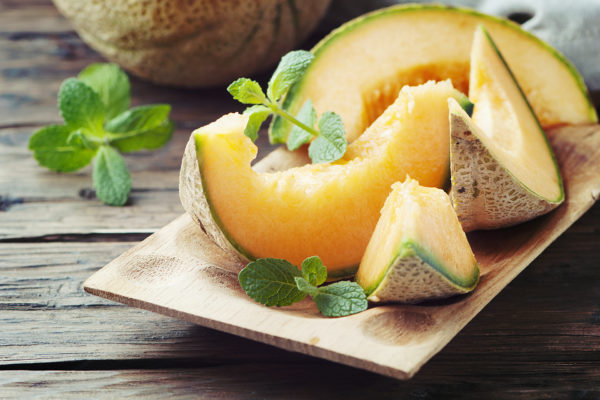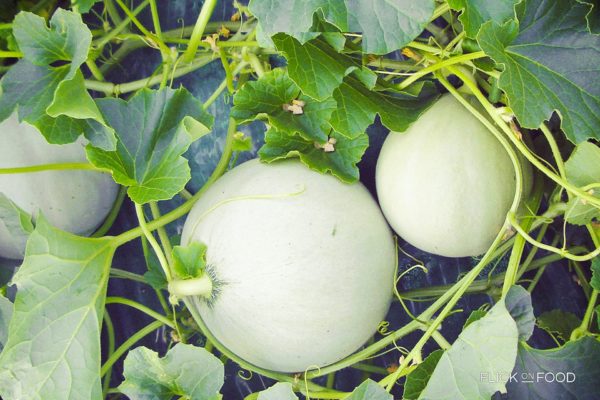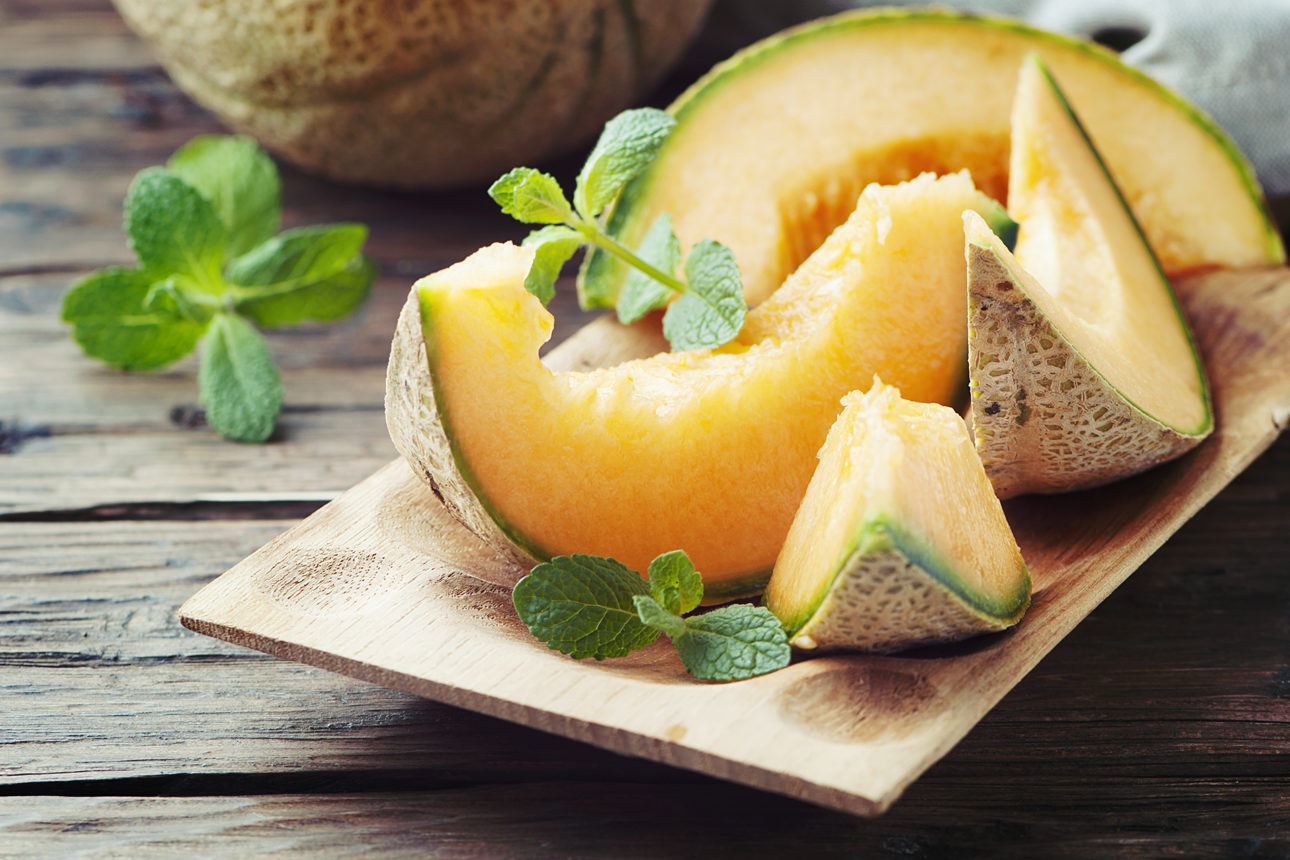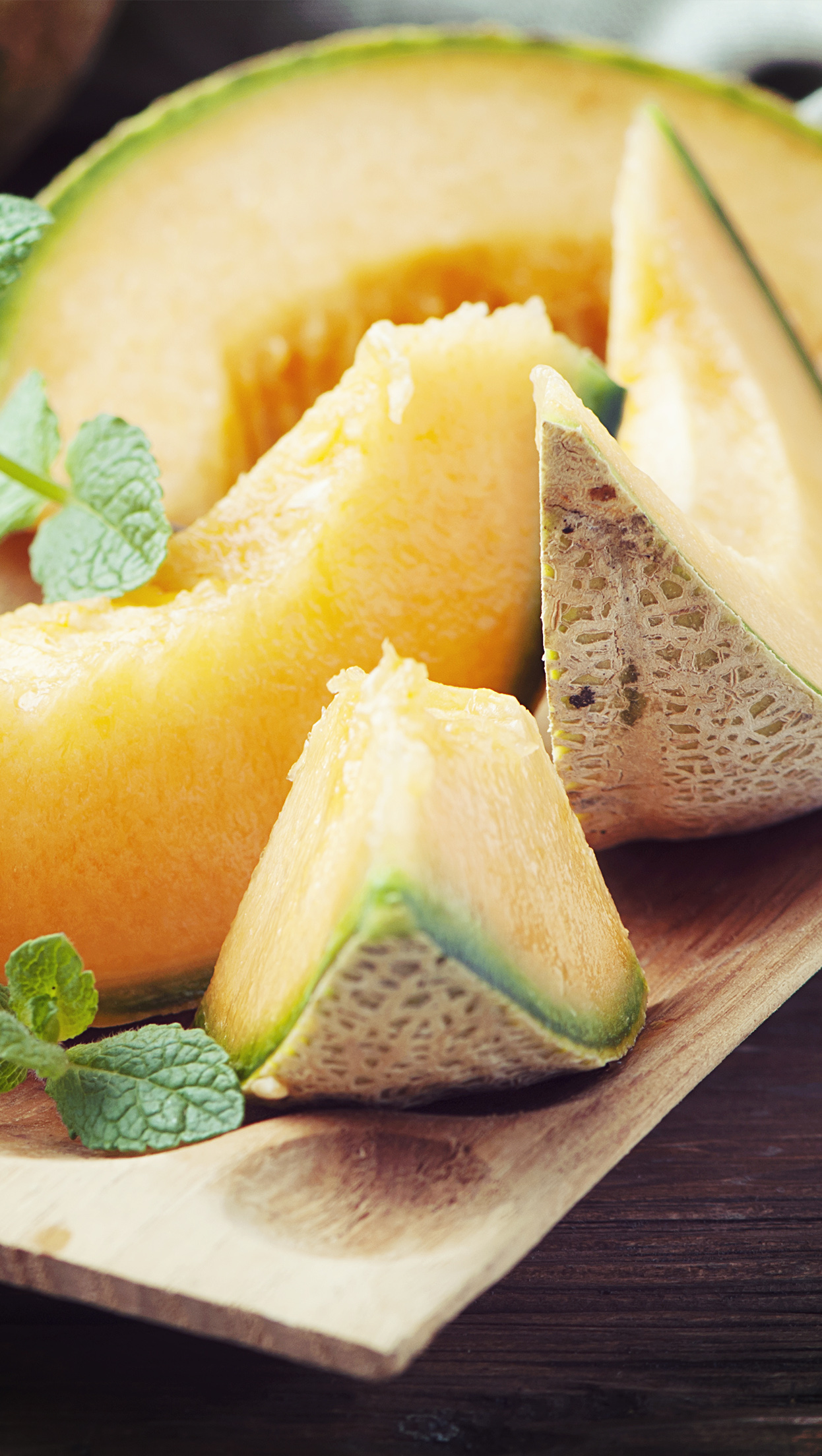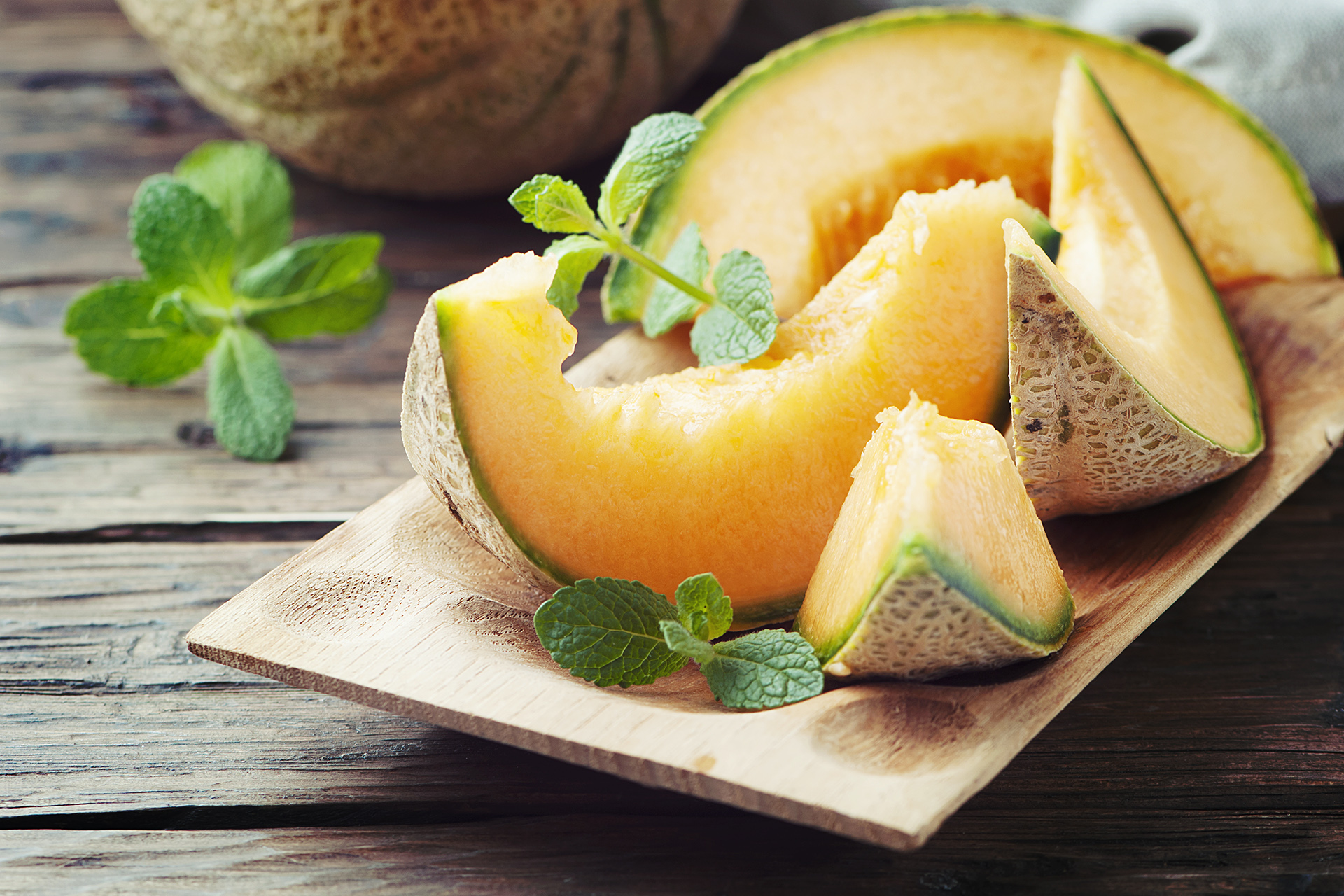
Ripe cantaloupe are highly fragrant: perfect to enhance a Greek salad.
Origin
The origins of the cantaloupe melon, part of the Cucurbitaceae family, are ancient and little known. Some believe they came from Africa, while others think they hail from Asia Minor. Their very old roots are evidenced in a Sumerian poem, while Roman gastronomist and cook Marcus Gavius Apicius cited the melon in his latin recipe collection, writing that raw melon was served with “a sauce made of pepper, mint, honey, broth and vinegar.” The name ‘cantaloupe’ however, can be traced back to an area near Rome called Cantalupo, where it’s said that the first of these melons were brought by missionaries returning from Asia. Only later they were also exported to France, when the pope relocated to Provence.
Cantaloupe is a summer variety of melon characterized by a round, often oval shape, a fairly smooth skin and color ranging from grey to greenish. The flesh inside however is bright orange. Among the most highly prized varieties of cantaloupe are Charentais (known for its extra sweet flavor) and the Prescott (an early-blooming and highly aromatic variety).
Cook it
To choose a good melon, you always need to smell it. If it’s fragrant, this means it has reached the right stage of maturity. In addition to eating them raw, cantaloupe work well in a wide range of recipes, whether sweet or savory, appetizer or dessert. One of the most “Italian” traditions is a simple dish with melon with prosciutto (from Parma of course)–a very old combination dating back to medieval times. Its sweet, fresh taste makes cantaloupe perfectly suited for summery dishes: with feta and olives it makes an interesting variation on the usual Greek salad. Pureed cantaloupe served chilled could be a new, colorful take on an August night’s dinner. Or cocktails with melon cream and vodka are an ideal before-dinner drink to welcome guests.
Did you know that?
Those with the most refined palates say that male cantaloupes are more flavorful, and can be identified by a black spot on the end opposite the stem. It should be noted that even the seeds of the cantaloupe are edible, and are rich in nutritional value: they contain protein, fiber, magnesium, phosphorus, potassium and vitamin E. Toasted melon seeds can add crunch to yogurt, cream, salad or rice, or can be eaten between meals as a tasty snack. The melon itself is also great with fish-based recipes—puréed melon is excellent with shrimp cocktail or swordfish carpaccio.



